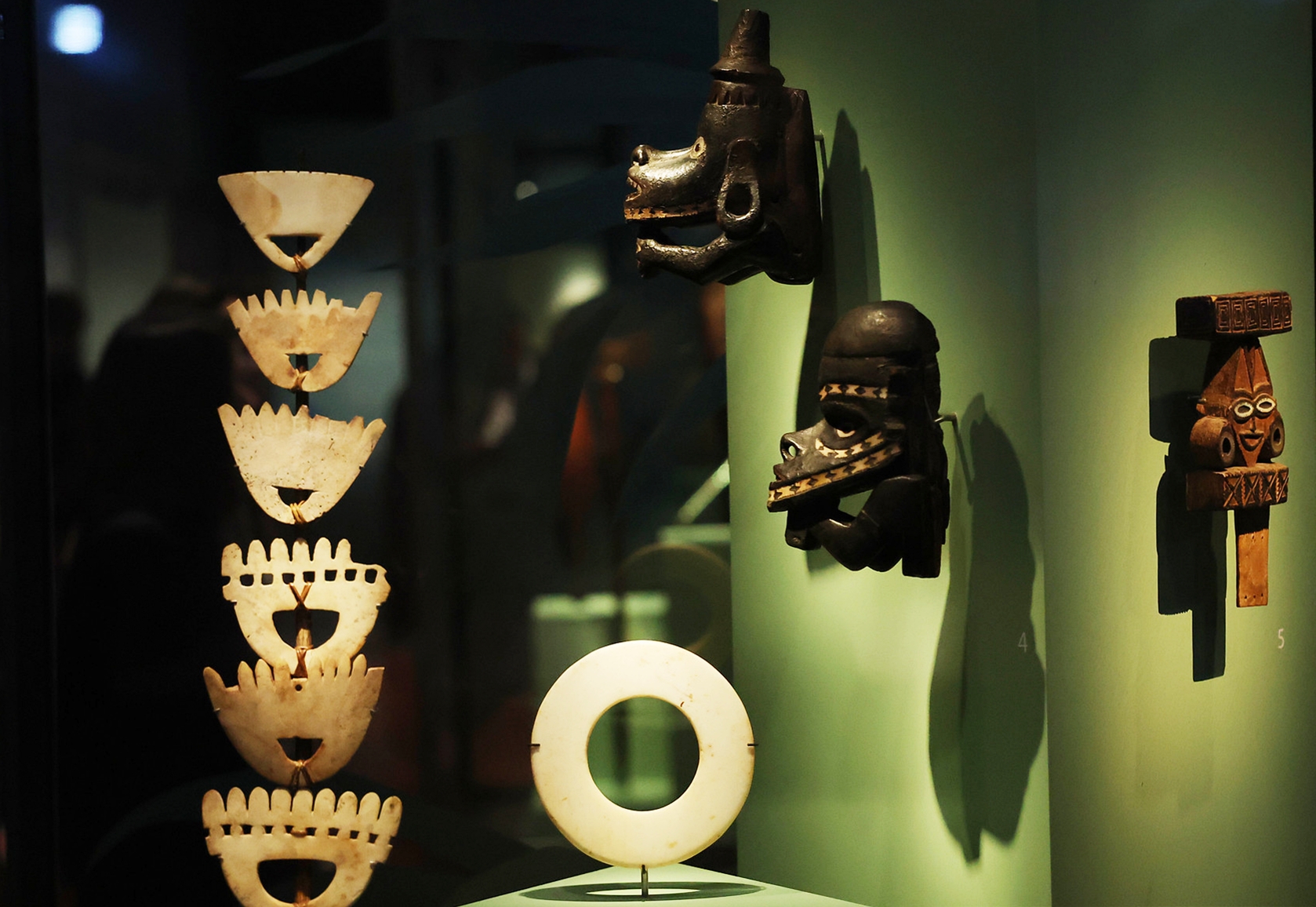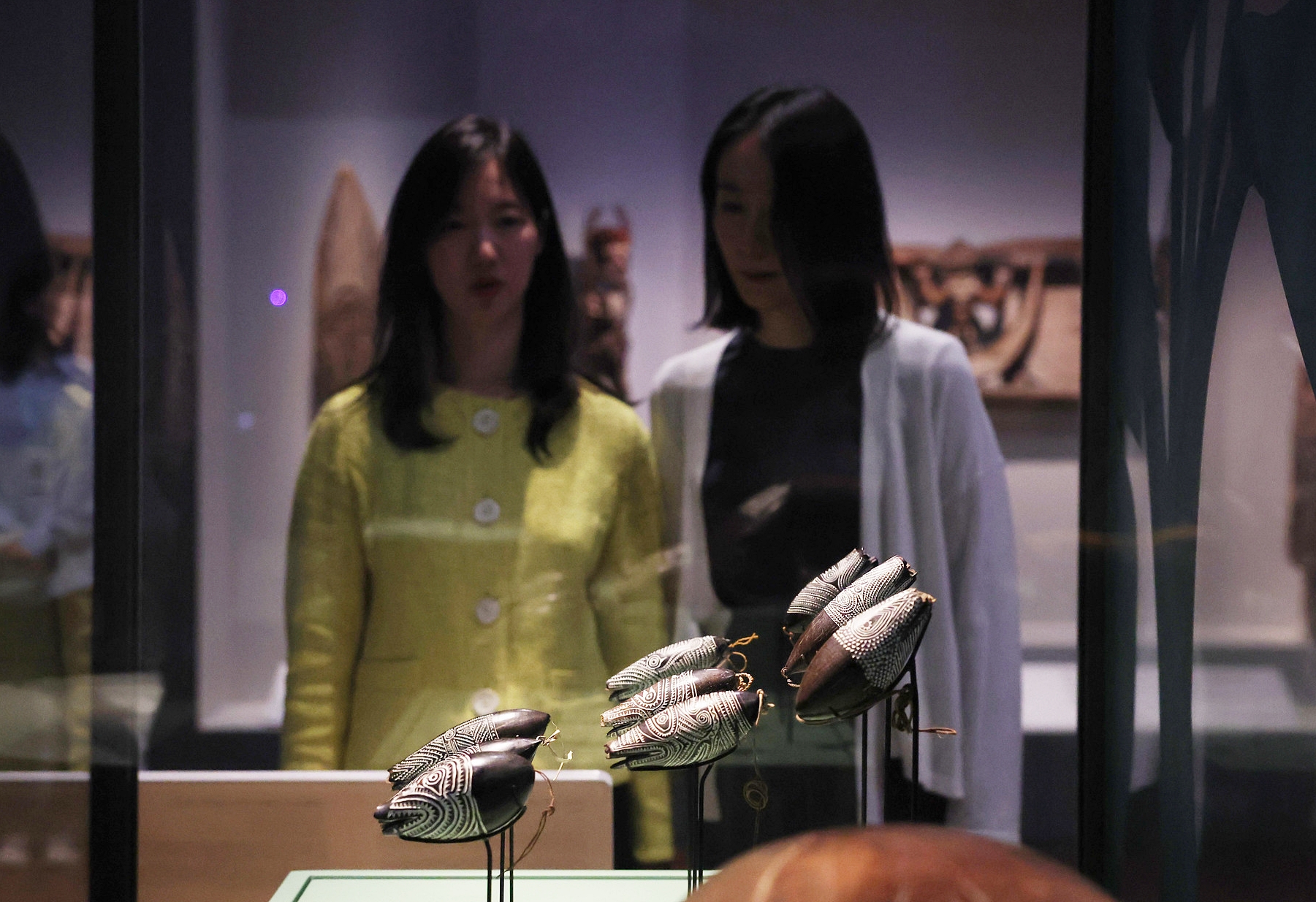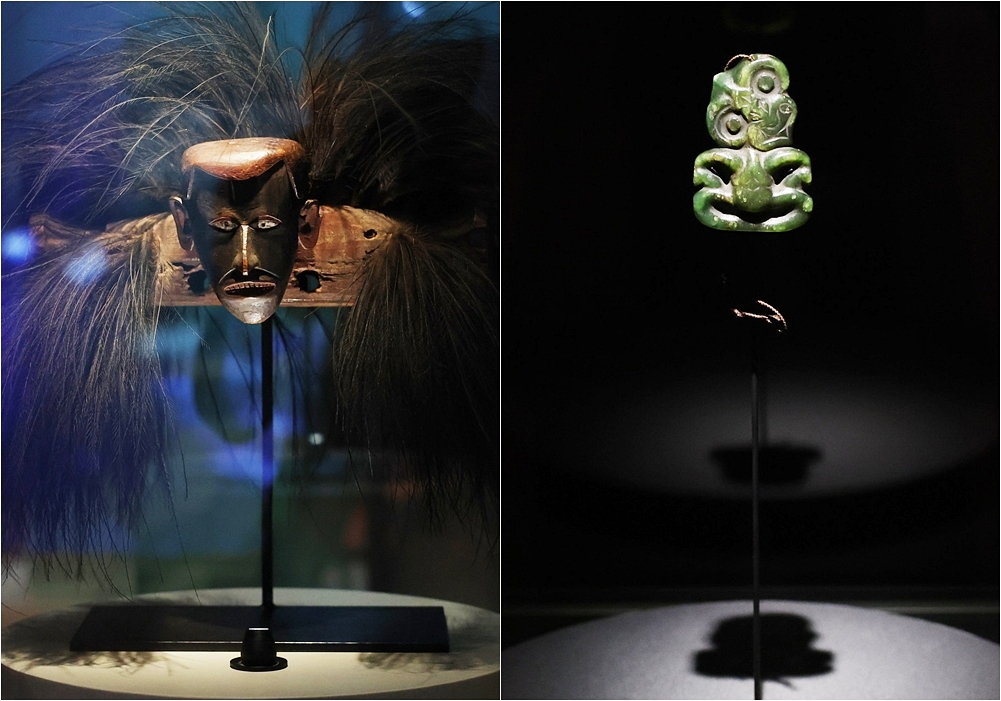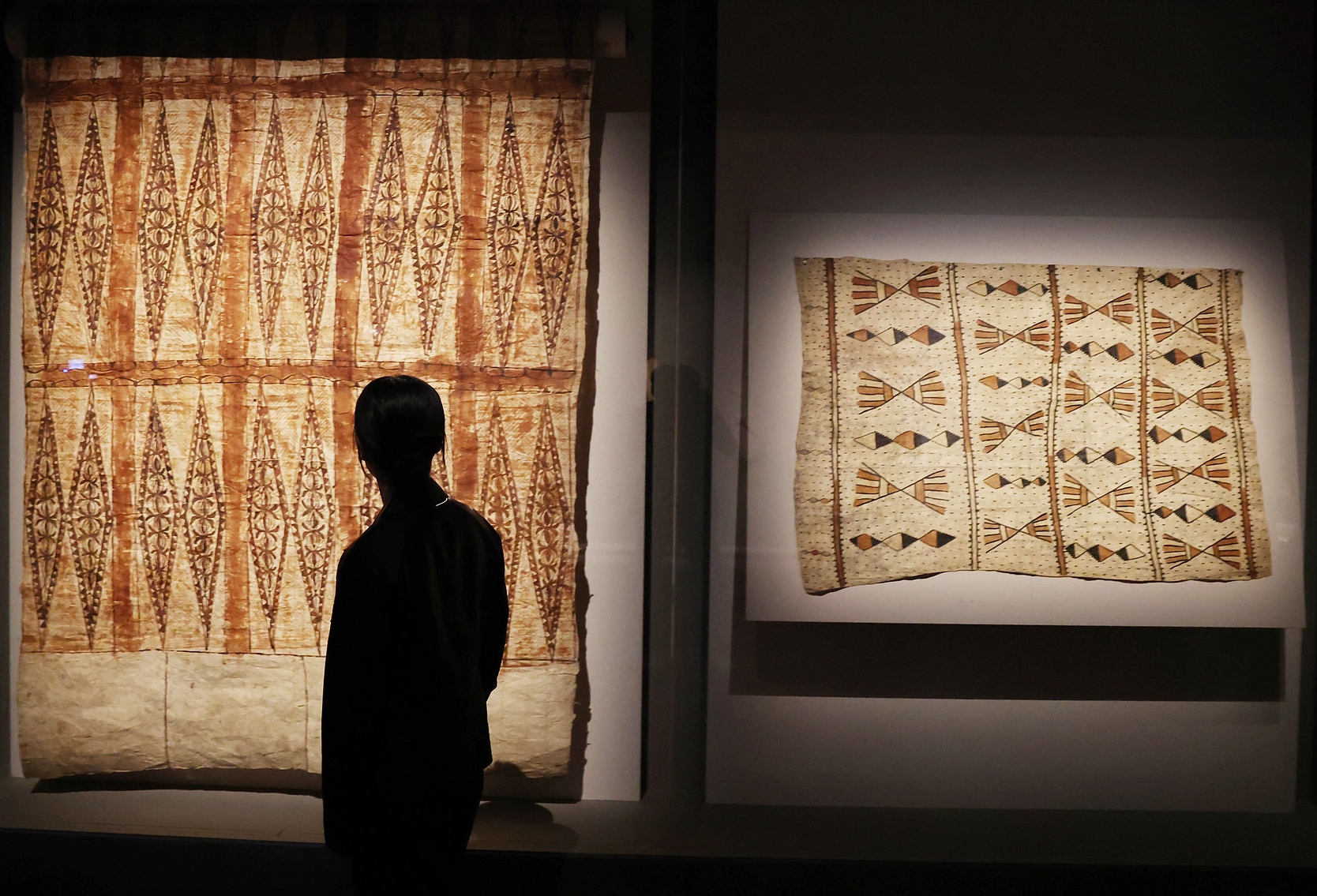- 한국어
- English
- 日本語
- 中文
- العربية
- Español
- Français
- Deutsch
- Pусский
- Tiếng Việt
- Indonesian

The news conference for the opening of the exhibition "Mana Moana - Arts of the Great Ocean, Oceania," which is being jointly hosted by the National Museum of Korea (NMK) and Quai Branly Jacques Chirac Museum of France, was held on April 28 at the exhibition space on the NMK's second floor in Seoul's Yongsan-gu District. Shown above are nguzunguzus, or anthropomorphic figureheads shaped and installed on the prow of a canoe in the Solomon Islands.
By Xu Aiying and Charles Audouin
Photos = Lee Jeongwoo
The Pacific Ocean, which covers about a third of the planet's surface, has numerous islands scattered like stars in the sky. This vast body of water saw people sail, discover islands and settle there, allowing Oceanian culture to develop.
Shedding light on the Pacific arts and philosophy within Oceanian culture, the exhibition "Mana Moana - Arts of the Great Ocean, Oceania" was unveiled on April 29 in a news conference. The event is being jointly hosted by the National Museum of Korea and Quai Branly Jacques Chirac Museum of France.
The name "Mana Moana" symbolizes the purpose of the exhibition. "Mana" is a Polynesian word referring to the divine strength within all things and "moana" means the vast and boundless ocean.
The exhibition features 179 artifacts from the 18th to 20th centuries including canoes, sculptures, musical instruments and ornaments as well as works by contemporary artists.

Marupai (hunting charms or amulets), which are made by delicately sculpting coconuts and applying lime afterward and said to have magical powers, are part of the exhibition "Mana Moana - Arts of the Great Ocean, Oceania" at the National Museum of Korea.
Oceania: vast oceanic space
The exhibition begins with the history of the Oceanian people's sea voyages and settlements and moves on to the stories of Melanasia and Polynesia. The artifacts displayed reflect the marine culture of Pacific islanders through examples like elaborate navigation and canoe manufacturing know-how developed over millennia.
Dogai, or a sculpture of a dug-out canoe prow, and taurapa, a decoration of the canoe stern, reflect the Oceanian people's navigational expertise and worldview.
The jade pendant hei tiki is another highlight of the exhibition, representing the pedigree and vitality of Maoris. Women wore it during pregnancy and childbirth and men when they went to war.

The exhibition "Mana Moana - Arts of the Great Ocean, Oceania" features a dogai (left), a sculpture of a dug-out canoe prow, and hei tiki (pendant).
The essence of Oceanian arts is jewelry and handicrafts. Natural resources such as whale teeth, coconut fiber and mother-of-pearl are used to create harmony and grab attention.
The displays also feature traditional and contemporary Oceanian arts. An untitled acrylic painting on a canvas by Emily Kam Kngwarrey (1910-96), a leading artist of Australian aboriginal art, depicts traditional patterns that used to be drawn on women's bodies for rituals to commemorate the connection between the land and its ancestors.

Tapa, or a cloth made of tree bark, is on display at the exhibition "Mana Moana - Arts of the Great Ocean, Oceania" held at the National Museum of Korea.
Oceania's message to people today
Oceanian art has a range of roles and meanings, but it makes people contemplate their relationship with nature. Its traditional worldview considers the ocean sacred and all organisms as companions, teaching the modern world about the wisdom of sustainable life amid environmental crisis.
The Oceanian way of reviving myths and ancestors through art emphasizes the importance of cultural diversity and recovery of identity in a globalized era. It teaches an open attitude of preserving one's culture while respecting others at the same time.
The exhibition ends on Sept. 14.
xuaiy@korea.kr